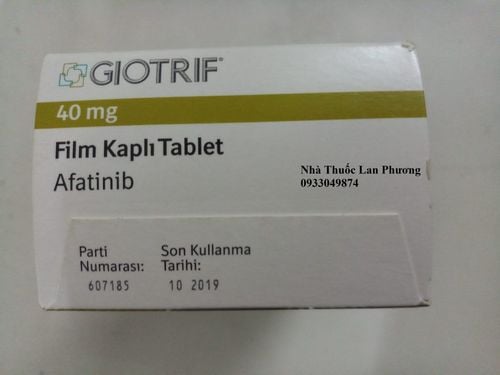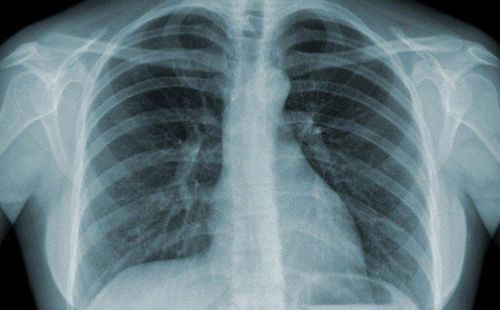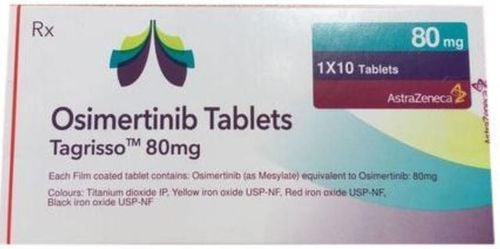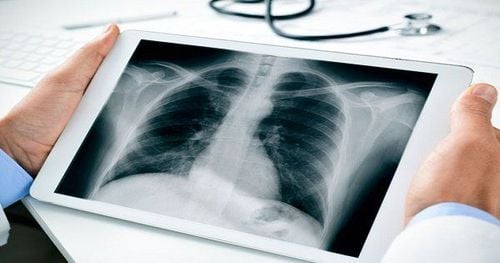This is an automatically translated article.
Lung cancer is ranked among the leading causes of cancer death and lung cancer becomes the deadliest disease today. To prevent this disease, you need to actively screen and screen as soon as possible. So what tests does lung cancer include?
1. What is lung cancer like?
Lung cancer is known for malignant or cancerous cells that form in the tissue of the lung. Lung cancer is one of the ten most common cancers in the world, and is also the leading cause of death. The disease is often detected when it is too late and difficult to treat.
Lung cancer occurs when abnormal cells are produced and grow uncontrollably, affecting the functioning of the lungs. Over time, these tumors can spread to the adjacent lung, lymph nodes around the windpipe, and other locations in other parts of the body. The special thing about lung cancer is that most patients are diagnosed when the disease is already at an advanced stage and the ability to metastasize is very fast.
Common symptoms and signs of lung cancer are usually due to a prolonged period of time, in addition to a bloody cough, chest pain and shortness of breath. After a prolonged cough, the patient may experience shallow breathing, uncontrollable weight loss, difficulty swallowing when eating, hoarse voice, wheezing, painful bones and pleural effusion.
Lung cancer usually includes two main types: non-small cell lung cancer with four stages and small cell lung cancer.
2. Types of Lung Cancer Tests
What test to know for lung cancer? There are many diagnostic tests for lung cancer, specifically:
2.1. Histopathology What is the test for lung cancer? Histopathology was performed from specimens obtained during endoscopy or during computed tomography-guided transthoracic biopsies.
2.2. Cytological test Cytology is a lung cancer test with the process of lymph node aspiration, pleural effusion to find malignant cells.
Tests based on lung tissue biopsy can confirm the type or extent of cancer and these are also invasive tests.
2.3. Bronchoscopy Patients may present with symptoms of shock, hemoptysis, fever, pneumothorax... Bronchoscopy is performed to help identify the tumor originating from the bronchi, and at the same time remove it. patient samples so that other related tests can be done.
2.4. Chest X-ray X-ray will help detect lesions on the lungs through the image of the film, the doctor can find images of pleural effusion, locate the location as well as the size and shape of the affected lung tissue. damage. Usually, chest X-rays are relatively inexpensive and do not take too long to perform. However, chest radiographs are difficult to detect many lesions at the apex of the lung, or it is difficult to identify the internal characteristics of the lesions. Approximately 30% of lung lesions are missed by chest radiographs alone.
2.5. In addition to chest X-ray, the doctor may assign the patient to perform a computed tomography scan to detect lesions that the chest X-ray may not find. When performing computed tomography, X-ray energy is used, so it is difficult for the patient to avoid radiation. Therefore, the patient should not have CT scans twice in a row in a short period of time or the patient may experience an allergic reaction to contrast.
2.6. SCS test This test determines the morphology of cells in the patient's sputum through a microscope. The test is quite fast and has a low cost. However, the accuracy is not high. Meanwhile, the false positive rate is quite low with 1% and false negative can happen up to 40%.
2.7. Lung cancer marker test Lung cancer marker test is done by testing blood with special proteins produced by cancer cells such as AP, PAM, CEA, CYFRA21-1. This method is non-invasive, safe and simple in sample collection. However, blood tests do not reveal 100% of the nature of lung cancer. Therefore, a false-positive result may occur because the blood is of a different quality to that of the tumor. CYFRA 21-1 is elevated in esophageal cancer , or non-small cell lung cancer or breast cancer...
2.8 Cyfra 21-1 Test Cyfra 21-1 Lung Cancer Test Test is common useful in the diagnosis of non-small cell lung cancer. This index in patients with benign lung disease is usually below the threshold of 3.3 micrograms/L.
2.9 NSE test This test is used to diagnose small cell lung cancer. At that time, serum or plasma NSE index will be taken by quantification by electrochemiluminescence immunoassay on immunoassay analyzer. With 72% of cases of small cell lung cancer, the serum NSE level increased above 25ng/ml, however, other lung cancers only increased by about 8%. The diagnostic sensitivity of this test will increase with disease severity in patients with small cell lung cancer.
2.10 ProGRP test For cases of suspected small cell lung cancer or need to distinguish this cancer from other types of lung cancer, the patient may be ordered by the doctor to perform the ProGRP test. . This test also belongs to the group of lung cancer markers, but has a higher sensitivity than the NSE test method. Moreover, this method also helps in the differential diagnosis of other lung tumors. In addition, this test is especially useful in cases where a biopsy of the lung tumor cannot be performed.
2.11. CEA test With CEA index is often done with about 29% of patients with lung cancer giving a result higher than 10 ng/ml (normal CEA index is between 0 and 2.5 ng/mL)
2.12 . CA19-9 test The test looks for antigens present in the gland cells of many organs, including the lungs. This test is of little value in early detection because about 50% of patients with lung cancer do not show an increase in the CA19-9 index.
3. Early test for lung cancer
Lung cancer originates in the human genome. Disease is caused by genetic changes. These changes can be inherited but do not affect the DNA sequence and still have changes in gene expression. DNA methylation is the process by which methyl groups are added to a DNA molecule. Abnormal DNA methylation changes are not the same as temporal changes and can be detected in the early stages of cancer or pre-cancer. Therefore, DNA methylation is recognized as a biomarker in the early diagnosis of cancer.
Advantages of DNA methylation biomarkers in lung cancer detection:
Abnormal DNA methylation can tend to occur at specific sites and specific types of cancer. Therefore, it can be applied in specific cancer diagnosis. DNA methylation is a highly stable DNA modification, so PCR can be used to selectively amplify methylated DNA to help detect body fluids as well as early stages of cancer. letters. DNA methylation markers can be obtained from samples non-invasively, thus facilitating patient testing and increasing screening participation rates. Lung cancer is ranked among the leading causes of cancer death and lung cancer becomes the deadliest disease today. To prevent this disease, you need to actively screen and screen as soon as possible. Accordingly, for accurate results, you should choose specialized medical facilities to make the diagnosis.
Lung cancer screening is the most effective measure for you to detect and promptly treat lung cancer, protect your health and life. Currently, Vinmec International General Hospital has a Lung Cancer Screening Package with many outstanding advantages such as:
Team of highly qualified and experienced doctors; Comprehensive professional cooperation with domestic and international hospitals: Singapore, Japan, USA, ..; Comprehensive treatment and care for patients, multi-specialty coordination towards individualizing each patient; Having a full range of specialized facilities to diagnose the disease and stage it before treatment: Endoscopy, CT scan, PET-CT scan, MRI, histopathological diagnosis, gene-cell testing, .. .; There are full range of main cancer treatment methods: surgery, radiation therapy, chemotherapy, stem cell transplant... When registering for the Lung Cancer Screening Package at Vinmec, customers will receive:
Specialized examination respiratory medicine; Low-dose computed tomography lung cancer screening.
Please dial HOTLINE for more information or register for an appointment HERE. Download MyVinmec app to make appointments faster and to manage your bookings easily.













